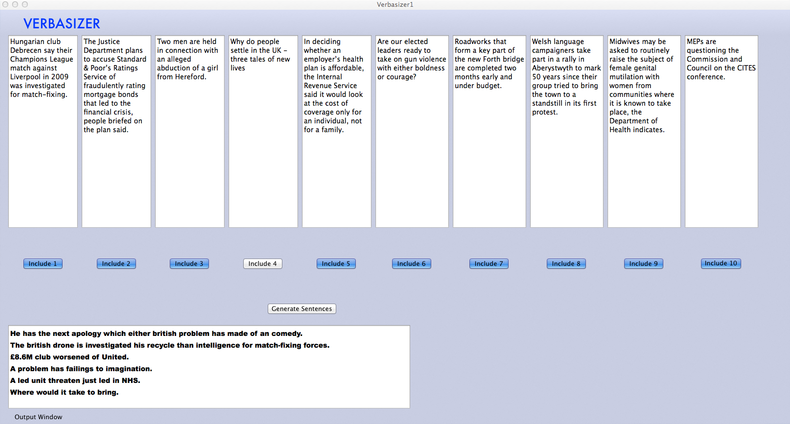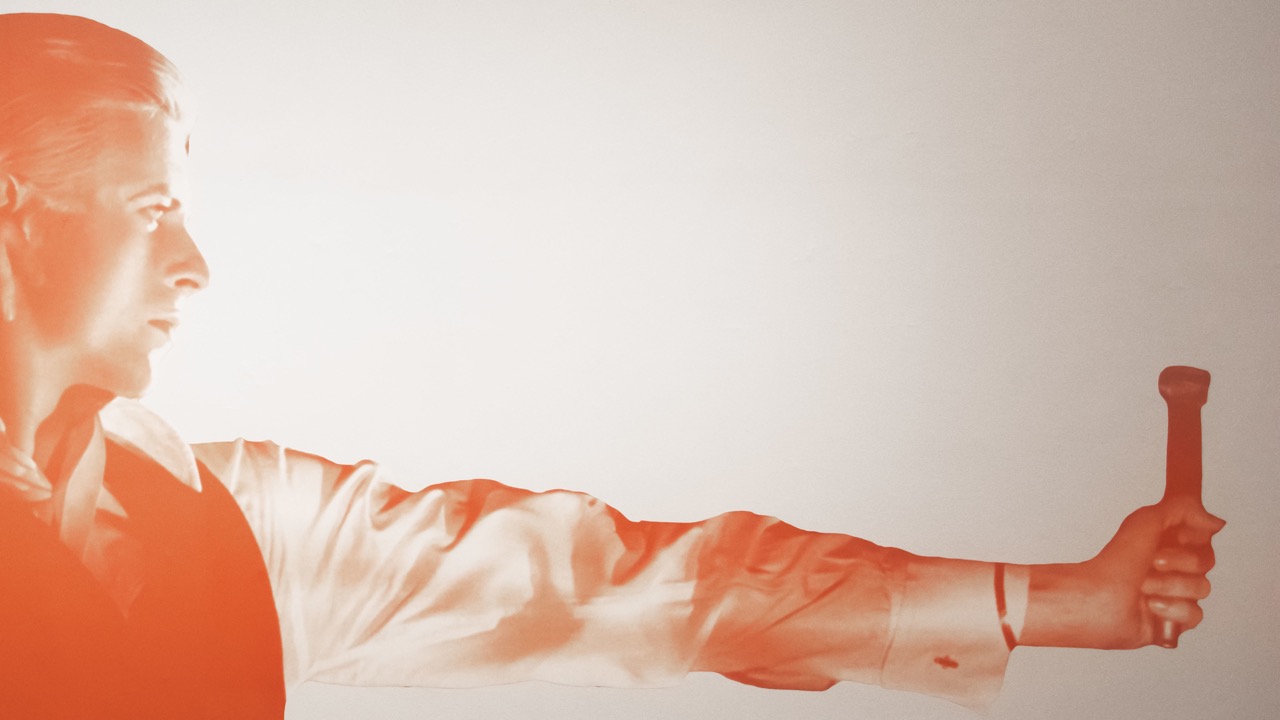03.23.24
"What you end up with is a real kaleidoscope of meanings and topic and nouns and verbs all sort of slamming into each other."
It was the early 90s. Everything was cutting edge. Nirvana was about to change the world. Programming was entering a new era.
And amidst all of that, David Bowie was sitting in front of his little Apple Powerbook tinkering on his new app, the "Verbasizer".
The Verbasizer was developed by Ty Roberts and Bowie to replace some of his former writing practices. Ultimately at it's heart,
it was a sentence-randomizer application. Roberts described Bowie as taking multiple word sources, from newspaper clippings to
hand-written words, and throwing them into a hat. He then rearranged the fragments onto pieces of paper. He’d cross out some material
that didn’t fit and work to create lines of lyrics. Roberts suggested he could come up with software for Bowie to speed
up this whole process.
Finally completed you can see it being used by Bowie in the video
below. It's a clip from the 1997 documentary Inspirations, directed by Michael Apted. It allowed for different input methods
including simply typing in words and then arranging them in columns which could be restricted to nouns, verbs, adjectives, etc. Each
column could be weighted and have multiple words if desired. With a push of a button lyrics would then be created.
Anything to spark his imagination, all it took was a little fragment of a sentence. In the documentary, you hear Bowie saying
“The choices that I now make from this form, I can then reimbue it with an emotive form if I want to. Or, take it as it writes itself. So. I mean, some of the things I’ll emphathize with terrific. And I find that even maybe four words in here would… ‘The top kills himself.’ That sounds like a boss, doesn’t it? And suddenly I get a vision of a boss in the 30s throwing himself out of a window in the Great Depression. That might be enough to set me off writing a song about that.”
The results appeared on three albums from that period—Low, Heroes, and Lodger, the so-called Berlin Trilogy—today considered some of Bowie's best work. Below is a snapshot from an exhibition that was running at the Victoria and Albert Museum in London from 23 March to 11 August 2013. It wasn't an active application but rather a static display. A replica model has been made by Taoski to pay homage to the original. It can be found here.
Go check it out and give it a try for yourself. I'd say drop a comment below but that's still a work in progress. Happy songwriting.
